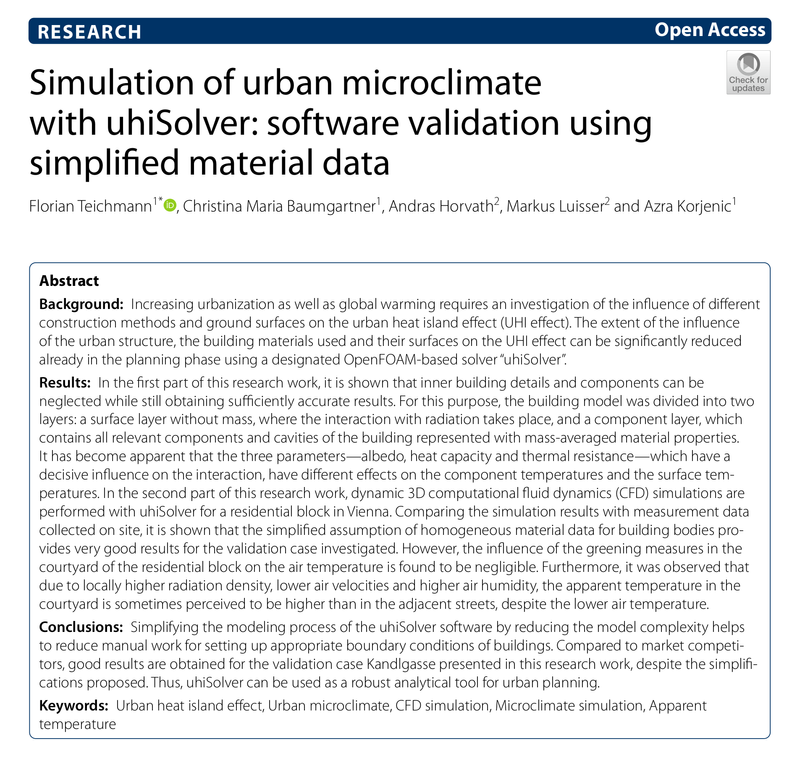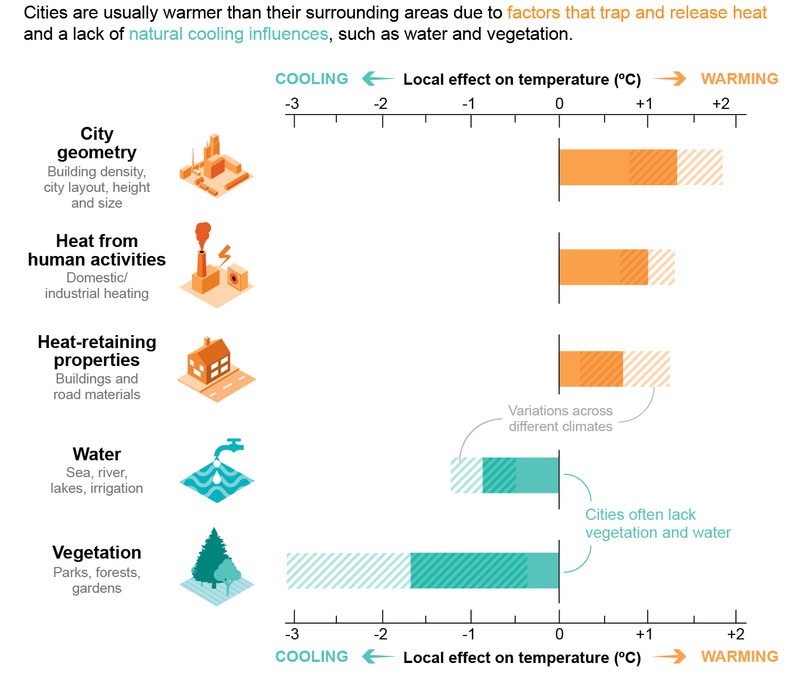The science of Urban Heat Island Simulation

As engineers and scientists, we strive to contribute our modest share to the research of urban climate modeling. With our simulation model uhiSolver, which captures all governing impact factors on urban microclimate, we give landscape architects, urban planners, policy makers and communities a robust tool to support them in meeting the challenges that rapid global warming throws at us.
You can download the full, peer-reviewed paper of the software validation at the link below. It’s open access!
Here is a short quote from the Sixth Assessment Report of the IPCC 2021 that underlines the relevance of global warming in urban areas, where the majority of humankind lives:
Future urbanization will amplify the projected air temperature change in cities regardless of the characteristics of the background climate, resulting in a warming signal on minimum temperatures that could be as large as the global warming signal (very high confidence). A large effect is expected from the combination of future urban development and more frequent occurrence of extreme climatic events, such as heatwaves (very high confidence).
At Rheologic, we are constantly developing our models to provide our customers with the best available tools to design cities that are fit for the climate change that has already started to arrive. The graph below is from the Sixth Assessment Report on Climate Change and shows the main influence factors on the higher temperatures that we see in cities. All these are included in our simulations; all geometric details of the built environment to account for radiation and reflection, terrain, and roughness effects of ground cover for real air movement over ground. Our models can also include heat sources (and sinks) like air conditioning and industrial heat, and as you can read in our paper, we went to great lengths to define the properties of various building types, and our calculations include all energy effects of evapotranspiration from vegetation and surface water.
All effects are combined in an apparent temperature metric, which shows the true impact on human thermoregulation, and gives professionals the best available knowledge base for their work.

Our models and simulation results are available in interactive 3D right in the browser, without the need to install anything. This gives multidisciplinary expert panels and citizens alike a low-barrier way to work together on the future of our cities. Get in contact if you want to know more!.
Published: